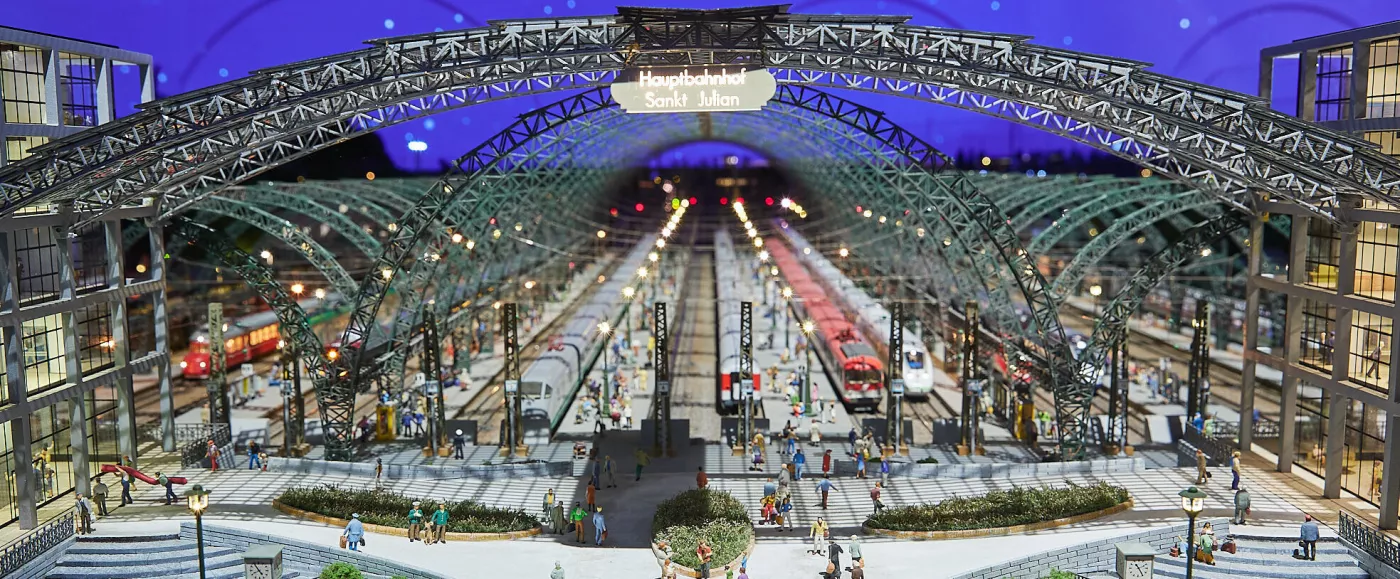Reptiles on Rails: Getting to Know the Crocodile, the Alligator, and the Turtle Train
Trains are creatures in constant motion. A unique species that, for over a century, has allowed us to reach new geographical and technical, anthropological destinations.
In the bestiary of the most extraordinary trains, three animals, in particular, have captured our attention – three locomotives that have each, in their own way, transformed the railway habitat. In this article, we embark on a journey on the tracks of the Crocodile, the Caiman, and the Turtle: the mighty reptiles on rails.
The Electric Crocodile roaming the rails of HZERO
It doesn't go unnoticed, even within the railway model of HZERO. When it emerges from the tunnel, it resembles the head of a reptile, with that long extension on the snout. Under the nickname of "crocodile," we find a series of electric locomotives, produced by various factories and in different versions.
The first specimens appeared in Switzerland in the 1920s. Crocodile locomotives are easily recognizable for their structure with a long central body and driver's cabs at both ends. The double-cabin setup allowed the crocodiles to skillfully reverse direction without physically turning around.
Crocodiles were particularly used on mountain routes, where they could tackle steep gradients, tight curves, and adverse weather conditions. Their unique appearance not only made them iconic but also demonstrated their versatility and adaptability – always a significant evolutionary advantage, both in the technical and animal worlds.
Crocodile locomotives transported goods and passengers through the picturesque Alpine landscape, spreading – until the 1950s – to Austria, Italy, Germany, and even India, becoming indelible protagonists in railway history.
It Will Be Called 'Caimano!' - Discover the E.656 Locomotive
In the February 1976 issue, the Italian railway magazine 'Voci dalla rotaia' launched a competition to decide the name for the new E.656 and E.655 locomotives. Among approximately a hundred proposals, one catches the attention of the jury. A few months later, on the sides of the cabs, the official logo was placed: a yellow-green caiman in motion.
In the context of Italian railways, the caiman evokes the power and majesty of two famous models. The E.656 and E.655, built in the 1970s, are electric locomotives designed to pull heavy trains. They have an aerodynamic shape and an imposing appearance. Composed of two coupled semi-shells with 3 bogies each, powered by 12 direct current motors of 400 kW each. The caiman represents the strength of a new generation of locomotives, capable of transporting freight trains over long distances, demonstrating reliability in a variety of environmental and railway conditions.
The caiman on rails has managed to overcome challenges and adverse territories, just like the namesake reptile is recognized for its determination and ability to adapt to the surrounding environment.
E.444 – Have You Ever Seen a Turtle Racing?
“Turtle” (Tartaruga in Italian) is the nickname in railway jargon for the E.444 locomotive.
The train evokes the shapes of the long-lived reptile, with its compact curves and solid profile. The locomotive is similar to a turtle in terms of endurance and reliability, but it is by no means slow. Consider that the E.444 could reach speeds of up to 180 km/h on straight tracks, with peaks of 200 km/h, when all other existing locomotives at the time did not exceed 140 km/h.
Introduced into service in the 1960s, the E.444 was designed for the high-speed transport of passenger trains. Often used for railway connections between major Italian cities, it offered passengers a comfortable and fast travel experience.
For over two decades (from the 1970s to the 1980s), the 'tartarugas' were the flagship locomotives in Italy, with a total of 117 units. It was an iconic locomotive, symbolizing prosperity, stability, and foresight, contributing significantly to the modernization of the entire country's railway system.
The Crocodile and Turtle Trains in the HZERO Model Railway Museum
Some of the creatures that pulled the railway culture of the last century can now be seen in miniature in the heart of Florence. In just five minutes from Santa Maria Novella station, you can reach HZERO: the model railway museum. Inside, there are a whopping 280 square meters of model railway with an environment of cities and valleys, rivers and mountains, populated by hundreds of trains moving in a meticulous reconstruction of their natural surroundings.
At HZERO, you can now see the “turtle” racing around a curve before taking refuge behind the hill and the “crocodile” patrolling around the lake with its unmistakable profile. The crocodile and the turtle are fascinating creatures that add a touch of personality and magic to the railway landscape. They remind us of the connection between machine, human, and animal – a foundational core of endless inspiration.


